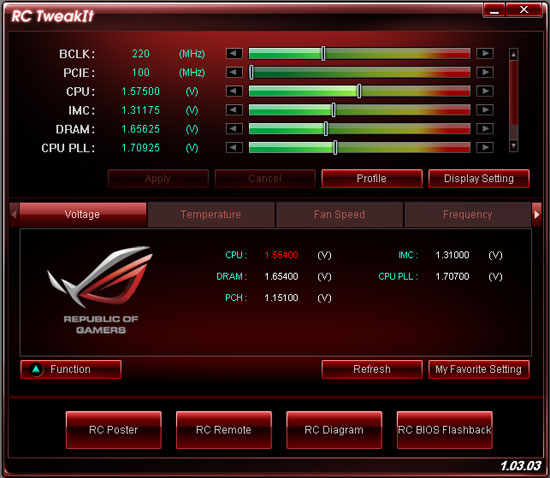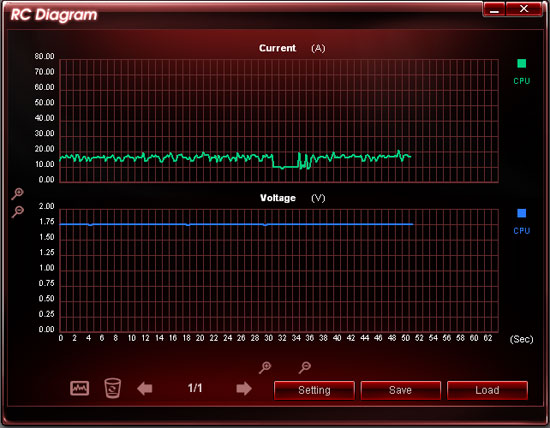ASUS Maximus III Extreme LGA 1156 Motherboard Review
RC TweakIt
One of the more unique features of the latest ROG boards is ROG Connect and accompanying RC TweakIt software. ROG Connect enables the user to connect a laptop, computer, or cell phone to their ROG board and through the RC TweakIt software they can adjust the voltages and frequencies of the board. This is a very powerful tool as it lets you adjust frequencies during benchmarks, while your operating system is loading, and it provides some vital monitoring. Since RC TweakIt requires no software to be installed on the primary computer it is a very lightweight feature with regards to benchmarking efficiency. This also reduces the number of variables that can go wrong. From my experience the worst issue I had was RC TweakIt crashing when I put my laptop to sleep with the M3E still connected via ROG Connect.

RC TweakIt lets you adjust all the necessary voltages and frequencies. I used the profile option excessively and found that it saved me from a countless number of mouse clicks and slider adjustments. When I was testing SuperPi 32M on the cascade I simply booted the system, loaded my benchmarking BIOS preset, let the system load Windows, and hit it with my SuperPi32M profile to easily set the clocks and voltages.

If something does go wrong during the boot process RC Poster is around to let you know. Instead of obscure number codes, the software gives you easy to understand text strings. Predictable issues like memory instability or QPI instability simply require a reboot with RC Remote and you are back on your feet.

The monitoring software, RC Diagram, was most interesting. You can chart all the voltages, frequencies, and the amp draw of the CPU. I found this to be most interesting, the above run is 3DMark 2006 run showing GT1 and the start of GT2 with the idle portion indicating the loading of GT2.

Comments are closed.